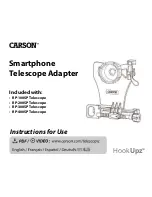
25
Sensors for Roller Conveyor Systems
7. Settings
7.1 Adjusting Switching Distance
The sensor’s switching distance can be set precisely. The setting is entered by means of a virtual potenti-
ometer with the software. 0% corresponds to turning the potentiometer counterclockwise as far as it will go
(minimum switching distance), and 100% corresponds to turning the potentiometer clockwise as far as it will
go (maximum switching distance).
Object Detection Directly in Front of a Background (e.g. side panel, mounting rail)
• Adjust and securely mount the sensor such that the spot strikes the object to be scanned.
• Remove the object and reduce the switching distance until the sensor is deactivated. The background is
suppressed as a result.
• Put the object back onto the conveyor and check to determine whether or not the sensor is activated
again.
Detection of Objects Without Interfering Background
• Adjust and securely mount the sensor such that the spot strikes the object to be scanned.
• Reduce switching distance until the sensor is deactivated and then increase it until the sensor is once
again activated – if necessary increase it a bit more in order to enhance switching reliability.
7.2 Setting Inputs and Outputs
Freely programmable pins I/O2 and I/O3of the additional I/O plug can each be used as an input or an output.
Possible functions include:
7.2.1 Input
Function
Single Discharge
Single discharge is triggered when activated.
Block Discharge
Block discharge is triggered when activated.
Wake up from Automatic roll cutoff
Rollers which have been shut down by this function are reactivated and the selected accumulation logic is
continued.
Sensor
An external sensor can be connected as an auxiliary sensor. This function can be used to extend the sensing
range. This makes it possible to monitor a location on an extremely wide lane with several sensors. Auxiliary
sensors can be connected to the main sensor via either an OR logic operation or an AND logic operation.
The switching status LED then indicates the selected combination of switching statuses of the main and
auxiliary sensors, and no longer indicates the switching status of the main sensor only.





































